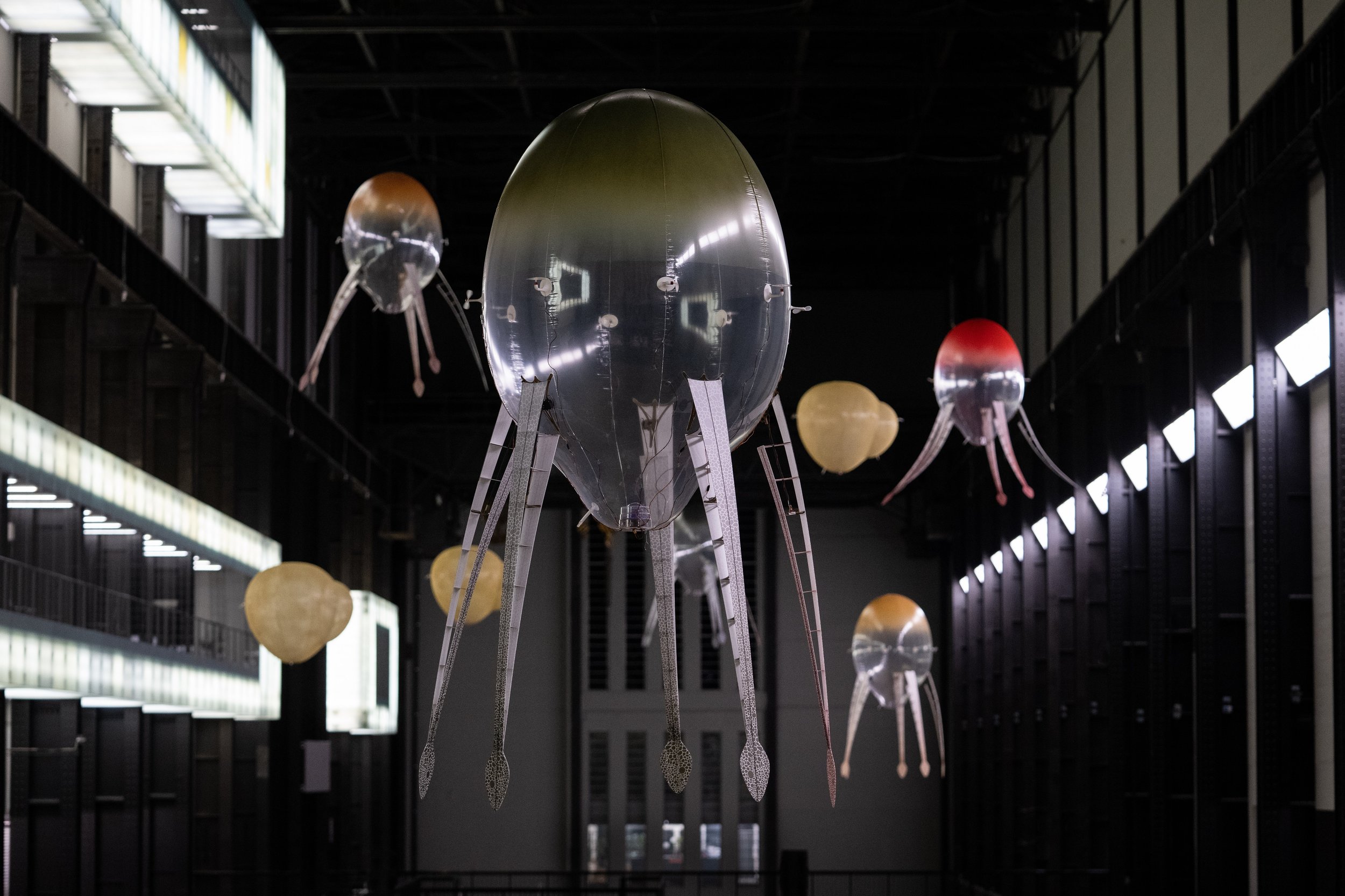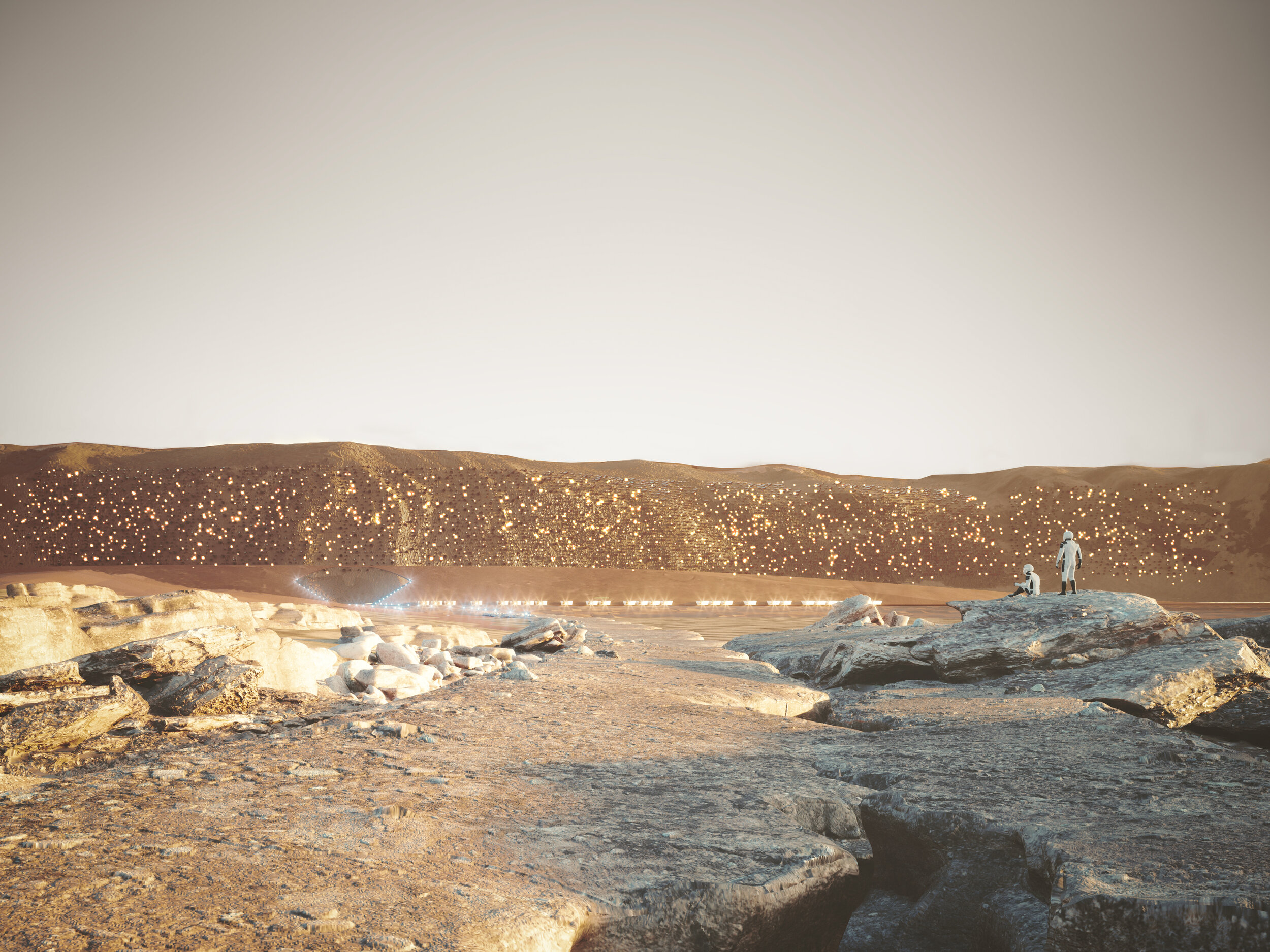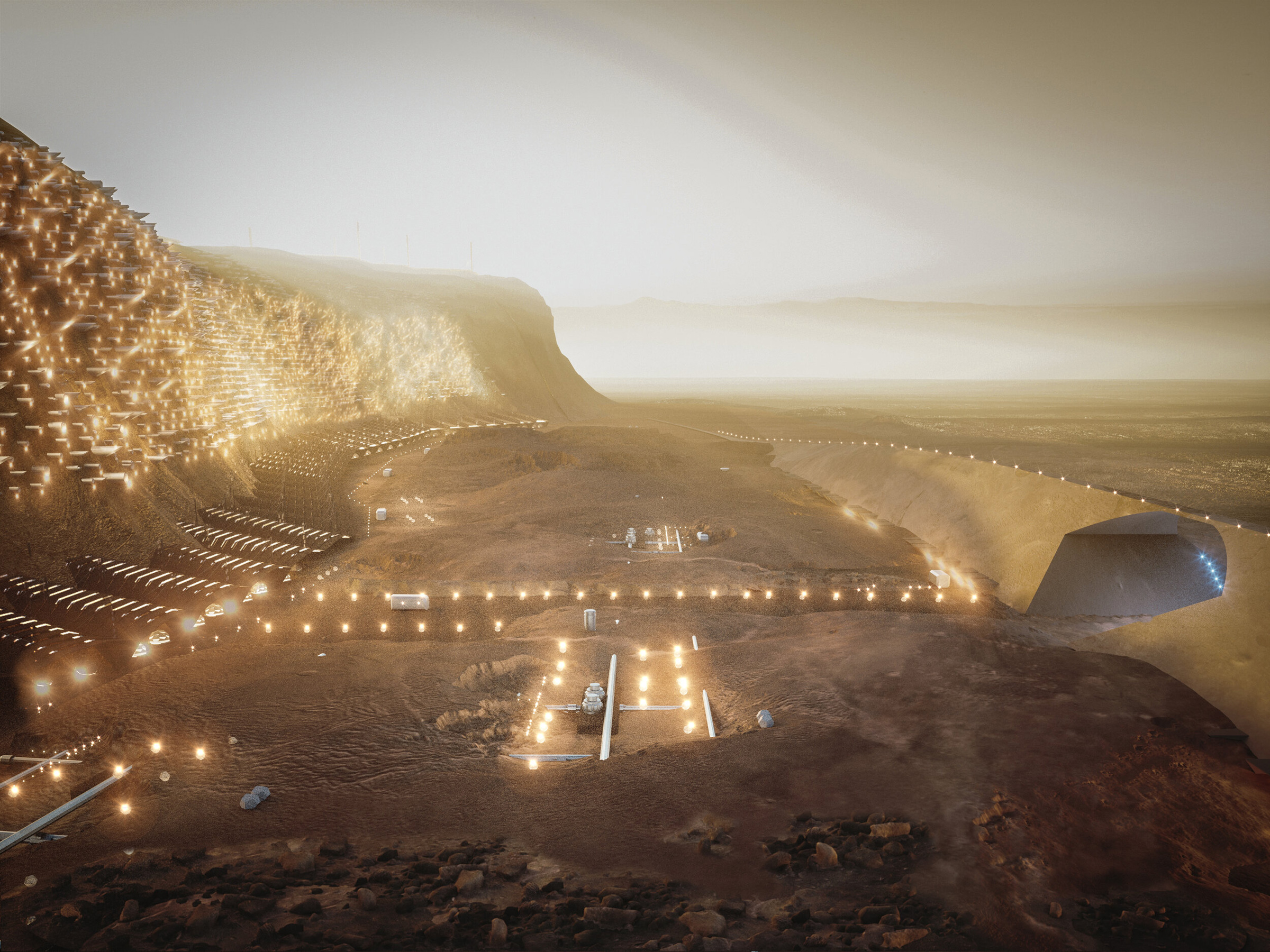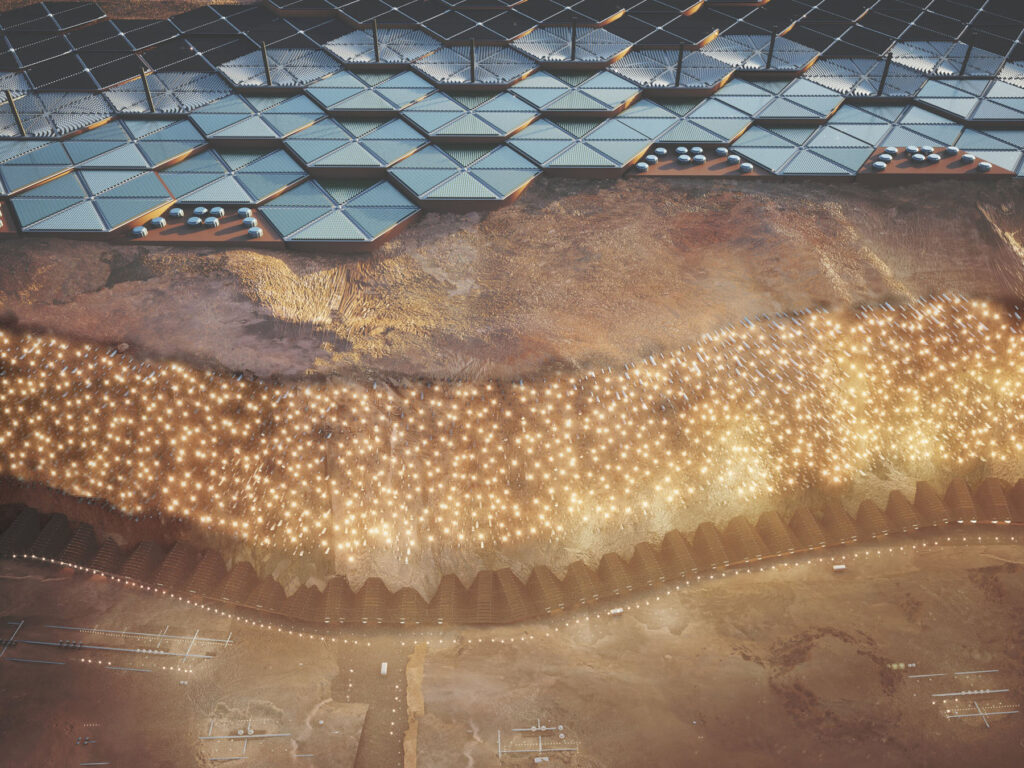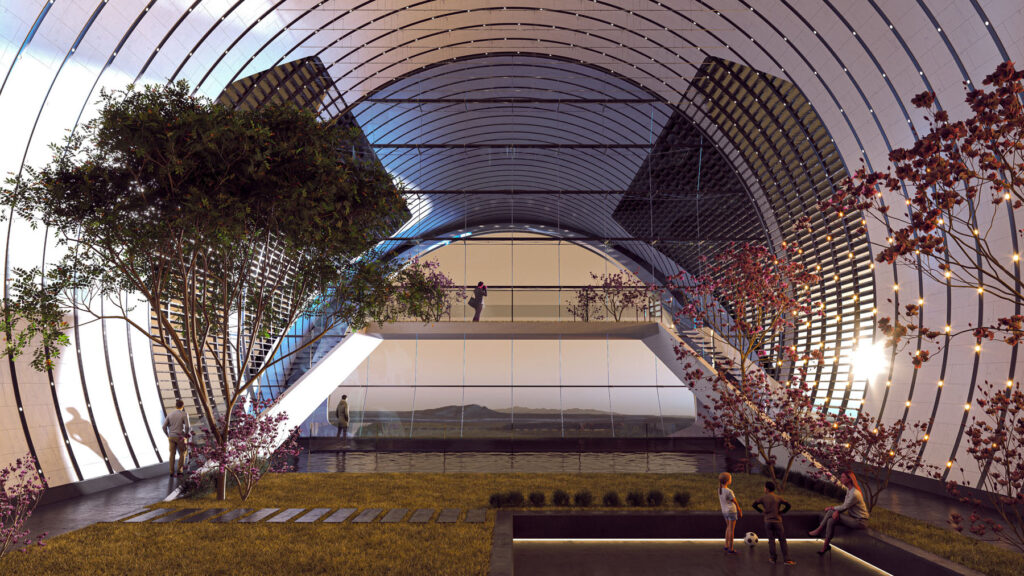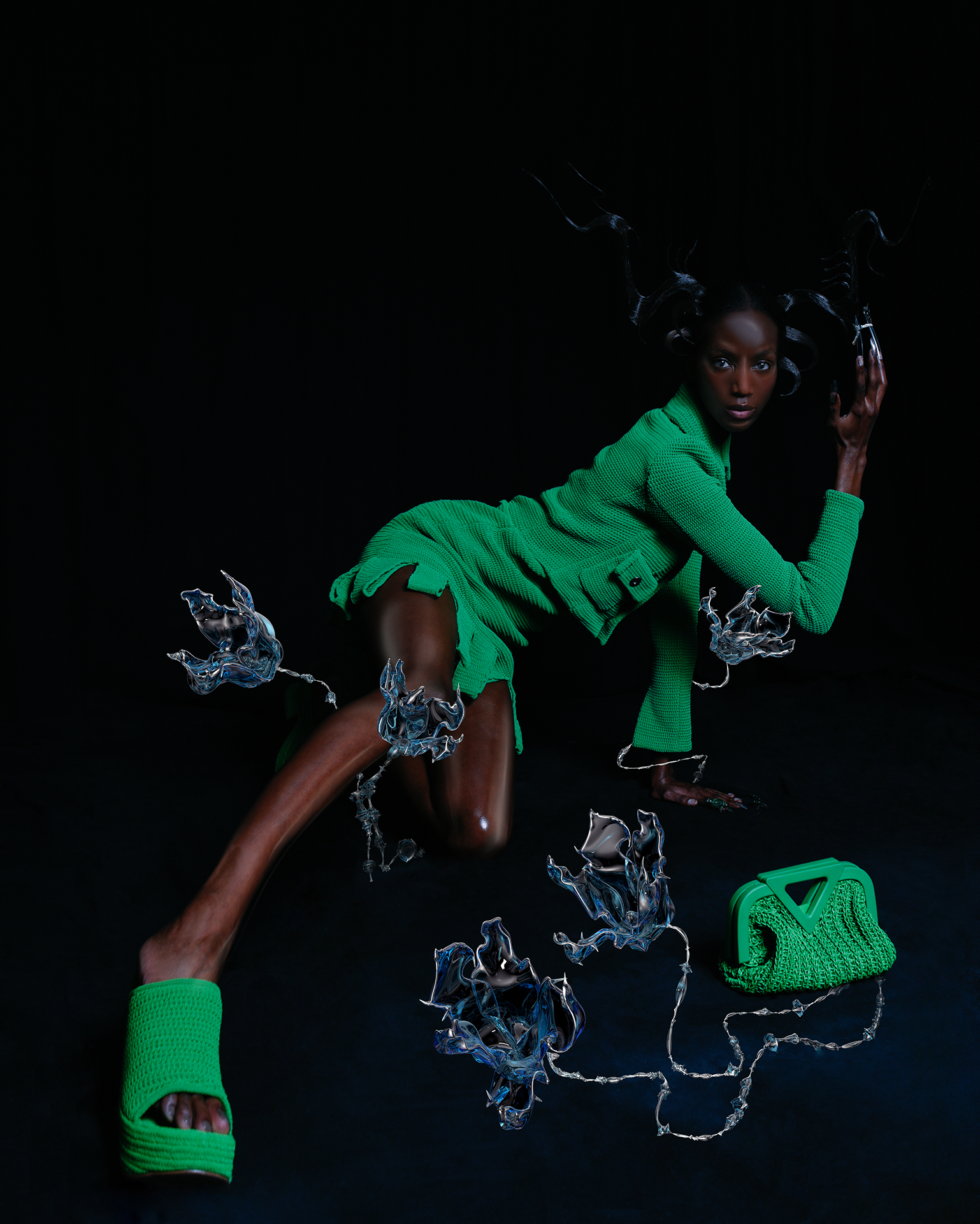That has a critical impact on how culture would be, because again, we ambition that culture must be more gregarious, where people will be not so focused on their own self, but also where the sense of community will be even higher than on Earth.
I imagine that there would have to be some kind of like a law enforcement system or some kind of punishment system. How would that work in such a small community to rely on each other?
Definitely, and that’s something very interesting that we still need to explore. We are currently at the state where we conceptualise the main ideas of the city. We are currently developing it from the architectural and engineering point of view, and the schedules that we are talking about are quite large. We might be able to start construction of the city on Mars by 2054, which is almost 35 years from now. So there is a lot of other analysis that needs to be done in conjunction with a multidisciplinary team of experts that might add some of those questions that you are asking.
There is always the risk of somebody not behaving properly and that has to be included in the way that the city functions in the same way that we are thinking about hospitals, the same way we are envisioning a location. It has to be considered what type of law will run on Mars. Maybe this is an organic process. Maybe the first settlers will have to find a way to organise things with some inspiration from some things that work on Earth. But then at some point, the society will have to be self-autonomous over there, and they will make their own decisions.
For this project there were included proposals for economic models, forms of government and dedication systems and the question was asked “Since we have the chance to start over, would life on mars be better than on earth?” However Nüwa will still retain many capitalist elements, “We envision a system that will combine the private sector – we’ll have our own economy and currency that will incentivise entrepreneurship”. Why not implement forms of true socialism or communism, as capitalism is already failing us here?
Sure, innovation will be critical. Settling on Mars will require levels of innovation that we are not even used here on from people on Earth. So we are not aiming for the city to have huge differences of wealth. Indeed, we do ambition that people might have more wealth than others, but not the extreme situation that we have here on Earth.
And when we look into the past at communism, humans find a way to look into their own personal interests without looking for the good of people. Right. I live in the US. I appreciate capitalism as a way to encourage innovation, and I think controlled capitalism is something that facilitates innovation. What is not good is that when you have monopolies that take over the market and new entrepreneurs cannot provide the innovation, that is not true capitalism. However, on Mars, we believe that intellectual property and an opportunity to generate value to society should be rewarded through recognition in society and through wealth among others.
But have you not considered creating a society that wouldn’t use money? Because then you would do away with the issues of some people having more and some people having less. Instead, you could come up with other ways to incentivise people to be innovative?
There are a lot of opportunities to continue exploring in this space. So again, we are architects and scientists, but it’s important for us to have people from different fields to add value to the project. We worked with a multidisciplinary group of experts that went from astrobiology, economy, life support systems, planetary design. So we have a very large amount of people, but that was only the first step, right. There will be a lot of opportunities to continue evolving so, going back to what we were talking about, it could be possible.
And definitely, there is something to investigate with that. But we don’t see, at least as of now, the harm of rewarding it through a certain level of wealth, because ambition is part of who we are as a species. We are the human species, wants to strive for a better life and wants to strive for a better thing for themselves and for their community. We ambition that Mars could be a great gateway for the scientific community to be recognised as they deserve. And that is connected again with innovation, connected to culture.
We’ve seen designs for Nüwa but there are also four other sister cities such as Abalos City which would be located at Mars’ north pole and Marineris City in one of the biggest canyons in the solar system. How might the designs of these cities differ from Nüwa?
Yeah, so we did not expand too much yet about the alternative cities but I’m going to explain first why there are many different cities. One is access to resources. In our case, we ambition self-sufficient, sustainable cities on Mars. That means that we are not relying on resources from Earth to operate or build a city, only in the very early phases. The rest will all be constructed from local resources on Mars. There are a lot of resources on Mars but they are in different locations. Therefore, we need to have a small set of settlements to be able to access those resources. Secondly, we must consider safety or resiliency. What happens if there is a problem, an emergency or something that is not expected in one city and everyone is in danger? We need to secure everyone and move them. Somewhere far enough away so they can be safe. And if you combine those two situations, we thought that to create a safe, long-lasting culture and colony on Mars, we needed to split it. And in this particular case, we split into five different cities.
We think that providing an open platform for creating identity is important as well, so different cities will have different cultures Some of them might be very different from each other, and that again connects to the sense of identity. Why do some people like London and others like New York because they are different, right? It’s not only about the culture of the people living there, but also the physical environment that makes room for that culture. It’s all interconnected. So we think that a successful permanent colony on Mars will be divided into different settlements, and all those settlements should have some type of unique identity
As life on Mars would require 10x more energy to support than on earth it has been stated that, even with the aid of technology, life there would involve an intense lifestyle and settlers could be contracted to spend 60-80% of their working lives contributing to the city. One cannot help be reminded of the song The Fine Print by Stupendium, which went viral during the pandemic, that talks about indentured servitude to corporations in space. As the price of a one-way ticket is estimated at $300k and would no doubt require a loan for the majority of people, what would prevent similar such issues from occurring in Nüwa?
So I’m not aware of the reference that you were mentioning. That $300,000 was a very quick estimate to premature to know what will it actually cost? That number was more of an academic level calculation based on today’s numbers. Is moving to Mars going to be easy or cheap? No, but you don’t need to go to Mars. If you don’t want to go to Mars, feel free not to go to Mars. Some people decide to move to very remote areas, and some people prefer to live in a nice, comfortable place in the Mediterranean, it’s is a personal choice, right? We can all choose what we want to do with our lives. So some people might be more inclined in going to Mars despite the harsh environments.
But it’s going to be an extremely tough life, probably not appropriate for most of the people that live on Earth. Those that want the sense of adventure, the sense of exploring a new frontier in what being human is, and to be pioneers in what is next for the human species. Those are the ones that might be willing to go to Mars and have a very tough life. Again, it’s not easy not only because of the amount of work that will be required.
So again, if somebody wants to go to Mars for a holiday, probably that person is not going to be welcomed by the community because that’s not a person who is going to contribute.
We do ambition again, that the city is owned by the people, not by corporations. Again, there is a lot of room for development on this, but we think it’s important for the citizens to own the city and to own the proceeds associated with potential trade that might happen in the city. Obviously, there would be a lot of trade going back and forth between Earth and Mars.
But yeah, it’s not going to be easy, or cheap, or safe. And it’s not going to be pleasant because the diet is going to change, and the environments that we are building, which we think is amazing and so spectacularly beautiful, but they’re different to what we are used to. We’re not going to see the ocean, or nature, or have the opportunity to walk around without the suit.




